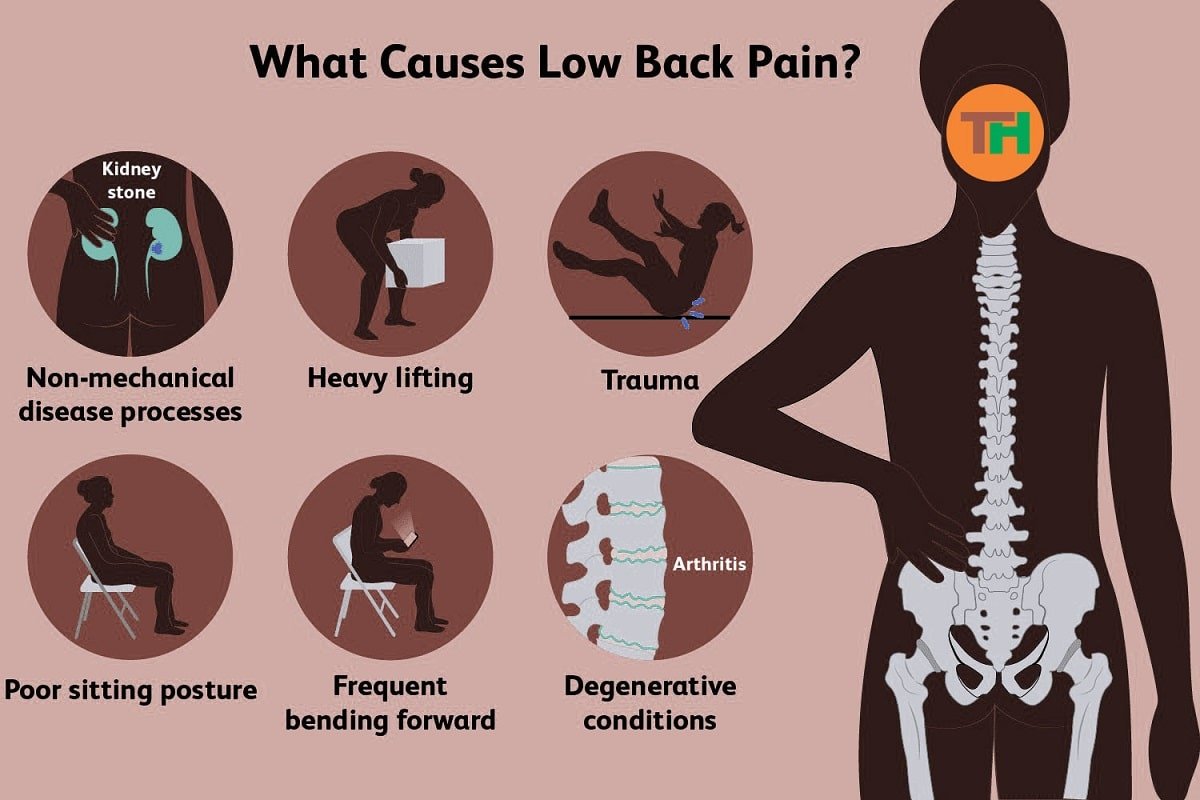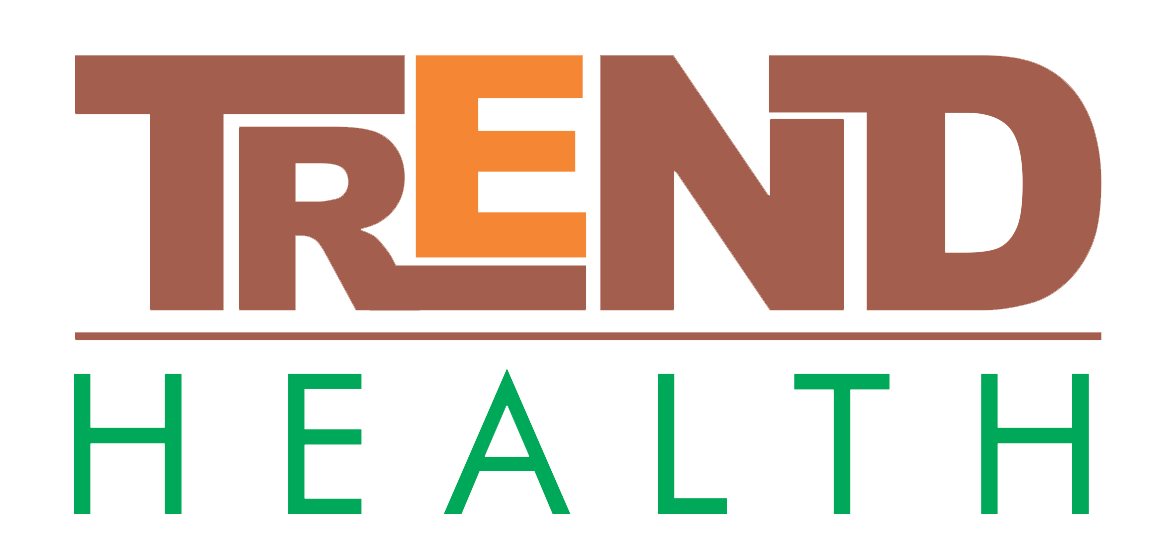Back Pain, also Called Lumbago or Common Lumbago , is one of the main reasons for consulting a doctor. Many people suffer from it occasionally, especially before the age of 65. Strenuous physical work can lead to problems, but a sedentary lifestyle and stress are also two Common Causes of Back Problems. Muscle tension, aggravated by annoyances, can Promote them, as can herniated discs, Osteoarthritis, Pregnancy or Osteoporosis, for example.
What are the Symptoms of Back Pain?
Back pain Occurs most frequently in the neck and lower back. It is usually a dull, Penetrating pain that increases when the spine moves, and even when coughing or laughing. It sometimes radiates to the arms or legs in the case of sciatic pain . The back muscles are tense. In most cases, lying down provides relief, as it relieves the spine of body weight.
What are the possible complications of back pain?
Back pain is often benign and disappears spontaneously within a few days or weeks (in 90% of cases, spontaneous healing is observed within six weeks). However, more than one in two Patients experience a recurrence within a year. Chronic back pain is defined as lower back pain that lasts more than three months despite treatment. It is estimated that it represents 10% of cases of lower backpain . It affects all life activities and can, in the long term, Cause Depression .
Some back pain can itself be caused by complications, for example a compressed vertebra in the case of osteoporosis.
Causes of Back Pain
Backpain can have many causes, which can be classified into five families.

Mechanical problems
-
- Postural defects when the back muscles are too weak. This situation leads to muscle contractures and an imbalance of the spine.
-
- Muscle tension, aggravated by annoyances (stress, anxiety , etc.).
-
- Injury to one of the discs located between the vertebrae, which can collapse or put pressure on the spinal cord or nerve roots (herniated disc), causing neck pain (cervicobrachial neuralgia), lumbago or sciatic pain.
-
- Age-related changes in the spinal joints (osteoarthritis).
-
- Spinal malformations.
-
- Vertebral compression linked to Osteoporosis .
-
- Back pain during pregnancy: One in two pregnant women suffer from backpain. The weight of the belly increases and the pregnancy hormones cause the ligaments in the spine to relax.
The aftermath of Back Trauma
-
- Strains or injuries to the back muscles, following a violent movement (“back strain”) or an impact for example.
-
- Vertebral fracture or compression following an impact .
Inflammatory or infectious problems
-
- Inflammatory diseases of the vertebral joints (spondylitis), vertebrae and the ligaments or muscles attached to them.
-
- Rarely, infection of an intervertebral disc.
-
- Intercostal shingles (infection of a nerve by the chickenpox virus ).
Painful radiation during certain diseases
In such cases, the pain, although felt in the back, comes from internal organs. Some examples:
-
- Radiation of pain from the gallbladder or liver (hepatic colic).
-
- Radiation of pain from a kidney (renal colic).
-
- Irradiation of heart pain (heart attack, Angina pectoris, Pericarditis).
-
- Irradiation of pancreatic disease.
-
- Pain in the lining of the lungs (pleurisy, pneumothorax ).
So-called “functional” pain
Various factors can make pre-existing back pain worse.
-
- Back Pain during Menstruation.
-
- Mental or Psychosomatic illnesses.
-
- Pain related to irritation of a nerve located between the ribs.
What measures can be taken to Protect Yourself from Backpain?
When back pain is due to <echanical or muscular problems, there are a number of simple measures that can help prevent it.
-
- Stand up straight. Avoid arching your back. Get into the habit of squatting when you want to do something close to the ground, or when you lift a weight: the effort will be on your legs and not on your back. If you have to stand for a long time, try to raise one foot (on a small stool, a shoe box, on the edge of a sidewalk, etc.).
-
- Carry Loads Close to your body. When carrying luggage, hold it as close to your body as possible. The further away it is, the more intense traction it puts on your spine. In general, avoid carrying weights of more than 10 kilos.
-
- Don’t twist your spine. If you have to lift a package to move it a short distance, avoid twisting into a bent-over position. Squat down, lift it using your legs while keeping your back straight, and once standing, turn around so that you are facing the place where you want to put it.
-
- Adopt a correct posture while working. Choose a chair that supports your back well and sit comfortably with your back straight. Place a pillow or rolled up towel behind your lower back for extra support. If you sit for a long time, it is a good idea to relax your back muscles from time to time by standing up, walking around or stretching. The neck muscles should be regularly exercised, such as arm windmills, shoulder shrugs, head movements, etc.
-
- Wear proper footwear. High heels cause poor posture and an unnatural curvature of the spine; if you have frequent back pain, wear low-cut shoes that provide good support.
-
- Sleep comfortably. A firm mattress and a correct bed base prevent back problems. Make sure your neck is well supported while you sleep. Some pillows promote neck muscle relaxation.
-
- Exercise. Building strong back muscles and abs relieves the spine and its intervertebral discs. That is why it is important to train it well with Special Gymnastics or suitable sports, such as swimming, gentle gymnastics and back strengthening. There are “back schools” where you learn how to stand correctly, strengthen your back and abdominal muscles and relax.
Australian and Brazilian researchers have analyzed several studies on the prevention of back pain. They have shown that Specific Physical Exercise (Stretching, Strengthening and toning the abdominal belt and back muscles, Exercises to correct bad posture, etc.), alone or with patient education, allows better prevention of back pain (learn more in the News of February 11, 2016).
- Exercise. Building strong back muscles and abs relieves the spine and its intervertebral discs. That is why it is important to train it well with Special Gymnastics or suitable sports, such as swimming, gentle gymnastics and back strengthening. There are “back schools” where you learn how to stand correctly, strengthen your back and abdominal muscles and relax.
-
- Lose weight. Being overweight puts a strain on the spine and can cause back pain.
-
- In a car, learn how to sit. To get into a car, sit down with your back facing you. Then put one leg in, then the other. To get out, do the opposite. Don’t hesitate to use the back of the seat to help you get up.
-
- Drive comfortably. If you have to take a long trip, place a small cushion on your lower back and change its position from time to time. Stop every two hours to take a few steps.
What can I do About Back Pain?
-
- Rest is part of the treatment for back pain. Be careful though, complete immobility in a bed is most often harmful! To maintain your muscles, it is essential to remain mobile.
-
- Sleep on your side, with a pillow between your Knees. The worst position for backpain is lying on your stomach.
-
- Applying heat in the form of baths or heat packs, for example, helps to relax stiff and sore muscles.
-
- Sessions with a physiotherapist help to relax muscles and relieve pain.
-
- If pain or tingling is felt in an arm or leg during or after treatment, urgent medical advice is required to investigate the cause.
| If backpain is accompanied by pain in the chest, left arm or jaw. | ||
| If backpain is accompanied by cold sweats, malaise or blue lips. | ||
| If the pain is severe. | ||
| If backpain is accompanied by coughing, unusual sensations in the arms or legs, difficulty moving fingers or toes, or problems with the sphincters ( incontinence ). | ||
| If the backpain is severe and accompanied by fever, chills or a general feeling of malaise. | ||
| If backpain occurs frequently and for no apparent reason. | ||
| If backpain persists beyond 4 weeks of treatment, or if it has not significantly reduced after 2 weeks of treatment. | ||
| If the pain is old and has been diagnosed and prescribed. |
| Legend |
If 15 or 112 is not indicated, call your doctor immediately, or go to the nearest emergency department. When in doubt, NEVER hesitate to call 15 or 112. |
What does the doctor do for back pain?
He first checks for an urgent or serious cause – sudden backpain can be one of the telltale signs of a serious illness. If there is not, he tries to find the cause of the back pain, sometimes by ordering a blood test, X-rays or a CT scan. In the first Episode of Acute Back Pain, These Tests Remain Exceptional .
Treatment varies depending on the cause of the back pain. For example, it may involve physiotherapy to strengthen the back muscles. The use of medications to relieve pain or relax the muscles is often part of the treatment. In some cases, a hospital stay is necessary to detect and treat the cause of the back pain.
If no improvement is observed after four weeks of treatment, the doctor looks for factors predisposing to the transition to chronicity: family or socio-professional conflicts, underlying anxiety or depression, etc.
What are the Treatments for Back Pain?
Treatment for back pain is based on the prescription of pain medication, muscle relaxants and, possibly, physiotherapy sessions (the benefit of which has been shown rather for so-called subacute lower backpain , i.e. lasting more than 4 weeks). It aims to prevent the onset of recurrences or chronic lower backpain . Rest is part of the treatment for backpain. However, be careful: Complete Immobility in a bed is Most Often harmful. To maintain your muscles, it is essential to remain mobile, with caution.
Medicines used for Back pain
The pain medications used first are those containing paracetamol, at a dosage of 1 g, 3 times a day. Nonsteroidal anti-inflammatory drugs (NSAIDs) can also be used in people without known digestive risk. The indication for lower back pain is only present in certain NSAIDs which are listed below. In case of insufficient relief, analgesics containing an opiate (Codeine, Tramadol ) can be prescribed by the doctor.
Corticosteroid injections
Local corticosteroid injections may be offered when the usual pain treatments have not provided sufficient relief. This is most often the case of stubborn back pain, the usual causes of which are herniated disc and intervertebral osteoarthritis .
Muscle Relaxants
Muscle relaxants or myorelaxants are used to reduce painful muscle contractures associated with acute low back pain . Due to modest efficacy and sometimes poor tolerance, they are no longer covered by health insurance.
Lumbar Belts for back Pain
After an episode of lower back pain, wearing a lumbar belt can be used in Certain cases, Particularly during activities considered painful. There are many models. It is up to your doctor to choose the one that suits you.
The treatment of Chronic lower back pain requires the Establishment of a Comprehensive care system in which a physiotherapist, an occupational therapist, a psychotherapist, or even the occupational physician or a social worker can collaborate to promote the patient’s socio-professional reintegration.
What role does adapted physical activity play in the management of lower back pain?
Adapted Physical Activity (APA) is one of the non-drug treatments for lower back pain. Indeed, regular physical activity helps to strengthen the back and abdominal muscles, which strengthens and supports the spine in daily movements.
Many sports activities can be adapted to be enjoyed by people with lower back pain: for example, rowing, swimming, tai chi and qigong.
In the context of lower back pain, the treating physician can now prescribe APA by specifying the desired objectives (muscle Strengthening, improved posture, weight control, etc.) and the patient’s specific contraindications. In clubs that offer these disciplines, instructors trained in the practice of health sports are responsible for defining fitness and training protocols adapted to each particular case. The costs incurred, often modest, are sometimes covered by supplementary insurance (“mutuals”) or town halls/departments.
Patients who use these adapted activities Report physical benefits (for example, in terms of autonomy and endurance), but also Psychosocial benefits (fight against isolation, better self-image).
Medications offered for chronic lower back pain
Treatment of chronic low back pain uses the same medications as for acute low back pain attacks.
Sometimes, Certain Antidepressants are used for their ability to relieve nerve-related pain.
| Legend | If 15 or 112 is not indicated, call your doctor immediately, or go to the nearest emergency department. When in doubt, NEVER hesitate to call 15 or 112. |
What does the doctor do for back pain?
He first checks for an urgent or serious cause – sudden back pain can be one of the telltale signs of a serious illness. If there is not, he tries to find the cause of the back pain, sometimes by ordering a blood test, X-rays or a CT scan . In the first episode of acute back pain , these tests remain exceptional .Treatment varies depending on the cause of the back pain. For example, it may involve physiotherapy to strengthen the back muscles. The use of medications to relieve pain or relax the muscles is often part of the treatment. In some cases, a hospital stay is necessary to detect and treat the cause of the back pain.If no improvement is observed after four weeks of treatment, the doctor looks for factors predisposing to the transition to chronicity: family or socio-professional conflicts, underlying anxiety or depression, etc.
What are the treatments for back pain?
Treatment for back pain is based on the prescription of pain medication, muscle relaxants and, possibly, physiotherapy sessions (the benefit of which has been shown rather for so-called subacute lower back pain , i.e. lasting more than 4 weeks). It aims to prevent the onset of recurrences or chronic lower back pain . Rest is part of the treatment for back pain. However, be careful: complete immobility in a bed is most often harmful . To maintain your muscles, it is essential to remain mobile, with caution.
Medicines used for back painPainkillers and anti-inflammatories
The pain medications used first are those containing paracetamol , at a dosage of 1 g, 3 times a day. Nonsteroidal anti-inflammatory drugs ( NSAIDs ) can also be used in people without known digestive risk. The indication for lower back pain is only present in certain NSAIDs which are listed below. In case of insufficient relief, analgesics containing an opiate ( codeine , tramadol ) can be prescribed by the doctor.
Corticosteroid injections
Local corticosteroid injections may be offered when the usual pain treatments have not provided sufficient relief. This is most often the case of stubborn back pain, the usual causes of which are herniated disc and intervertebral osteoarthritis .
Muscle relaxants
Muscle relaxants or myorelaxants are used to reduce painful muscle contractures associated with acute low back pain . Due to modest efficacy and sometimes poor tolerance, they are no longer covered by health insurance.
Lumbar belts for back pain
After an episode of lower back pain , wearing a lumbar belt can be used in certain cases, particularly during activities considered painful. There are many models. It is up to your doctor to choose the one that suits you.
The treatment of chronic lower back pain requires the establishment of a comprehensive care system in which a physiotherapist, an occupational therapist, a psychotherapist, or even the occupational physician or a social worker can collaborate to promote the patient’s socio-professional reintegration.
What role does adapted physical activity play in the management of lower back pain?
Adapted physical activity ( APA) is one of the non-drug treatments for lower back pain . Indeed, regular physical activity helps to strengthen the back and abdominal muscles, which strengthens and supports the spine in daily movements.Many sports activities can be adapted to be enjoyed by people with lower back pain : for example, rowing , swimming , tai chi and qigong.In the context of lower back pain , the treating physician can now prescribe APA by specifying the desired objectives (muscle strengthening, improved posture, weight control, etc.) and the patient’s specific contraindications. In clubs that offer these disciplines, instructors trained in the practice of health sports are responsible for defining fitness and training protocols adapted to each particular case. The costs incurred, often modest, are sometimes covered by supplementary insurance (“mutuals”) or town halls/departments.Patients who use these adapted activities report physical benefits (for example, in terms of autonomy and endurance), but also psychosocial benefits (fight against isolation, better self-image).
Medications offered for chronic lower back pain
Treatment of chronic low back pain uses the same medications as for acute low back pain attacks .Sometimes, certain antidepressants are used for their ability to relieve nerve-related pain.







